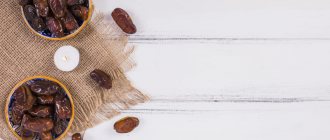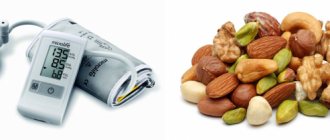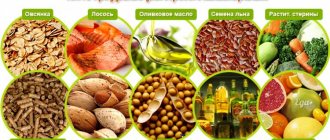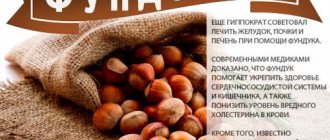Why are they important?
Nuts are an important part of a healthy diet. Thanks to the unsaturated fats in the product, the concentration of cholesterol in the blood is reduced. The heart is strengthened due to the same fats included in the product, as well as minerals.
This product is a direct source of protein and reduces the risk of cardiovascular diseases.
It is important to remember that this food has a high calorie content, so its excessive consumption will affect the condition of the figure if a person is watching it.
The most optimal amount to consume nuts is a handful per day, but no more. They have a general strengthening effect on all organs in the human body and improve the condition of the immune system.
Cranberry
Composition (per 100 g of product) : calorie content – 46 kcal; proteins – 0.5 g, fats – 0.1 g, carbohydrates – 12 g; sodium – 2 mg.
Cranberries contain unique phytonutrients (proanthocyanidins type A) that prevent the development of urinary tract infections. Eating cranberries also helps prevent ulcers.
The polyphenols in cranberries prevent the development of stomach cancer and may inhibit the growth of cancer cells in the mouth, colon and prostate. Drinking cranberry juice reduces the level of “bad” cholesterol and increases “good” cholesterol, reduces the stiffness of blood vessels and blood pressure.
TOP 10 nuts for cardiovascular health
Nuts in general have a positive effect on the heart. Some of them are less useful, others, on the contrary, should be part of the diet of a person who cares about their health. In order to understand the benefits of the product, you need to consider each type of nut separately and identify its benefits for the cardiovascular system.
Almond
Almonds charge the body with the energy necessary for an active life. The substances in its composition protect the heart from diseases associated with it. Vitamins in the product, such as E and B12, reduce cholesterol levels.
The almond kernel contains useful chemical elements:
- fats;
- alimentary fiber;
- carbohydrates;
- vitamins: group B, A and E.
Potassium and magnesium, contained in such foods, prevent the formation of blood clots and strengthen the walls of blood vessels. In addition, the entire composition of chemicals regulates heart rhythm, which is especially important for people experiencing problems with arrhythmia.
Hazelnut
Hazelnuts are a source of monounsaturated and polyunsaturated fats. It has a variety of phytochemicals that strengthen all the walls in the blood vessels, as well as the heart muscle.
In addition, this type serves as a prevention of atherosclerosis, as it eliminates excess cholesterol.
After eating this product, the body will receive potassium, magnesium, a large amount of fiber, as well as vitamins E and B.
Gretsky
Compared to other types, this type of product has more beneficial fiber and protein.
In addition to the B vitamins in the product, it is also rich in antioxidant properties and can prevent cancer.
The fats in this food are polyunsaturated and monounsaturated. They are able to reduce the level of bad cholesterol and increase the body's resistance to various types of diseases.
Peanut
Peanuts contain the optimal amount of magnesium, resulting in the production of sufficient energy to eliminate toxins from the body.
Vitamin E in its composition not only has a positive effect on longevity and skin condition, but also makes blood vessels elastic.
The elements contained in peanuts increase the body's resistance to harmful substances and protect against the development of diseases associated with the functioning of the heart.
Cashew
Cashews come from Brazil. This type is not high in fat, which makes it suitable for people watching their figure. Its benefits are to strengthen the walls of blood vessels and fill the human body with useful substances.
Cashews contain the following beneficial elements:
- selenium, which benefits cardiac activity;
- high iron content (raw nuts contain more iron than fried meat);
- omega-3 fatty acids;
- vitamins from group B, as well as E and PP;
- copper for the proper functioning of the nervous system.
Since cashews contain unsaturated fats, they can be considered beneficial for heart rhythm and heart function.
In addition to the heart, cashews have a positive effect on blood flow and brain function.
Muscat
Eating nutmeg is very problematic. It has a strong taste and an unpleasant aroma, but is often used as a seasoning. It improves brain activity and improves the digestion process.
It has fewer positive properties for cardiac activity than other types, but the vitamins and minerals it contains remove toxins from the body and promote vasodilation.
Pistachios
Pistachios are a storehouse of vitamins for human health. They are rich in polyunsaturated fats and vitamins that help produce energy for everyday life.
This product has been repeatedly studied and found that after just three weeks of eating pistachios, the level of “bad” cholesterol decreases by 12%. This is the basis for adding this type of food to various dishes and for use as an independent dish.
Doctors say that a common cause of cardiovascular diseases is the inflammatory process in the blood vessels. Since pistachios contain lutein, it acts as an antioxidant and prevents the inflammatory process.
Pecans
Pecans are classified as tree varieties. It contains a high amount of vitamin E, which protects the walls of blood vessels from blockage and eliminates signs of cardiovascular disease.
This product has a similar taste to walnuts, but it is more pleasant and oily than other types of this product.
If you include pecans in your daily diet, you will notice that a person’s activity will increase, and the heart will work without failures.
Cedar
Pine nuts have a sufficient amount of unsaturated acids, which prevent the formation of cholesterol plaques and reduce the risk of developing atherosclerosis , as well as other serious heart-related diseases.
The use of this product practically eliminates the occurrence of coronary disease and the development of hypertension.
If you already have hypertension, pine nuts tend to reduce blood pressure by several units.
There may be individual intolerance to this product, so there is no need to abuse it. Excessive consumption of such foods can ruin your figure and lead to obesity, since they consist of 60 percent fat.
Hazelnut
Hazelnuts are known for their high content of amino acids and beneficial vitamins. Arginine helps protect the body and strengthen blood vessels, as well as stable blood circulation.
The fats in this food lower blood pressure and contribute to the following factors:
- strengthening the heart muscle;
- selenium and zinc protect against nervous tension;
- protein strengthens blood vessels.
In addition to healthy fats and microelements, hazelnuts are the leader in fiber content.
Vitamin A is not found in all types of nuts, but hazelnuts do.
Walnut, where did its name come from in English and Russian?
Walnut in English is walnut, the word comes from the Old English wealhhnutu, literally “foreign nut” (from wealh “foreign” + hnutu “nut”), as it was brought to England from Gaul and Italy. The Latin name for the walnut was nux, meaning "Gallic nut".
The Russian name is also associated with the origin of walnuts. Pavel Syutkin, a historian of culinary and Russian cuisine, writes: “In Russia, acquaintance with walnuts apparently occurs in the 12th-13th centuries, when close contacts were established with Byzantium. It is from there that nuts come to us, but they are called “Greek”. Then many products and objects coming from this part of the world are called “Greek”, for example, buckwheat, known to everyone (according to one version of the origin of this word).”
Walnuts were also called “royal nut”, “Greek nut” and “Voloshsky nut” in Russian.
Fruit of the walnut tree
How many of them can you eat?
If fruits and vegetables can be consumed in large quantities for heart health and you know that they will not cause harm, then nuts in this sense are dangerous foods. In case of an overdose, pain in the abdominal area and allergic reactions are possible.
Once a day it is allowed to eat only a handful of this food, but no more. This is the recommended dose and should not be exceeded.
Then the food will have a positive effect on the cardiovascular system without disrupting the functioning of other organs.
When is Walnut Day celebrated?
In June 1949, the United States proposed an annual observance of National Walnut Day. This was done to popularize the royal nut. And on March 3, 1958, the 34th President Dwight David Eisenhower issued an official statement that this day was now fixed for May 17, then the celebration of the first National Walnut Day took place.
Ripe walnut
What other foods should you eat?
There are many healthy foods that you can use to build your daily diet. It includes:
- Fruits for the heart. Fruits such as persimmons or bananas, which are rich in potassium, cleanse blood vessels and strengthen the heart. Lemon and pomegranate provide the body with vitamin C and strengthen the walls of blood vessels.
- Vegetables. The body requires a certain amount of vitamins, which are found in fresh vegetables, such as pumpkin or tomatoes. In addition, juice prepared from them is useful. Vegetables such as onions and garlic contain many beneficial minerals and antioxidants.
- Healthy drinks. Drinking water and green tea is extremely important in the fight for heart health. Water is the source of life, and tea is the source of antioxidants. Research has shown that coffee also has beneficial effects on the heart. Fresh juices are used to remove toxins and improve blood circulation.
- Honey. Honey is a source of healthy sugars. One teaspoon a day will strengthen the heart muscles and give vigor.
- Milk products. Natural milk and other products are a source of calcium, which is important for the activity of a person and his blood vessels.
- Fish. This food is important, but preference should be given to marine life and fatty fish.
- Bitter chocolate. Cocoa in chocolate affects the patency of blood vessels and the functionality of the heart. It is a source of vitamins and microelements.
Also pay attention to the infographic:
Below we’ll talk about what to avoid.
Useful mixtures for the heart and blood vessels
There are many recipes where nuts are an additional component. Let's consider useful mixtures that help improve heart function and increase the body's defenses.
With honey
Bee products contain a lot of microelements, vitamins and vital substances for humans . Walnuts complement the mixture with unsaturated fats omega 3,6, 9. Prepare a step-by-step nutritious potion:
- Measure out 600 g of chopped yellow kernels.
- Add 300 ml of amber liquid.
- Place the container in a cool, dark place for 2 weeks.
Take 1 tbsp daily immediately after breakfast. l. dessert. When taken regularly, honey and nuts strengthen the heart muscle, normalize cholesterol, and increase immunity.
Tincture of walnut partitions
A drink made from nut partitions provides support for the heart muscle. It’s easy to prepare it at home:
- Fill a third of a 0.5 liter jar with dry product.
- Fill to the top with vodka.
- Place in a closet for 2 weeks.
Take 1 tbsp of brown tincture. l. three times a day for 12 days.
Pasta Amosova
Another useful composition will strengthen the circulatory system. The mixture is prepared according to the recipe:
- Place 250 g of raisins, prunes, figs and dried apricots in a bowl.
- Add 1 lemon and a glass of walnuts.
- Scald with boiling water.
- Pass all the products through a blender or meat grinder at once.
- Now add 250 g of honey and put it in the refrigerator.
Dried apricots contain a lot of potassium, magnesium, and iron, which are necessary for heart contraction. Lemon will be supplemented with ascorbic acid, which improves immunity. Take the elixir of life every morning, 1 tbsp. l. after breakfast.
With cranberries, honey and raisins
Berries and dried fruits enriched with bee components are useful for proper blood circulation. Prepare live food:
- Mix a glass of nuts, raisins and cranberries.
- Pass through a blender.
- Add 0.5 liters of honey.
Every morning, eat a tablespoon of berry-nut mixture. The body will thank you for your care and turn on additional reserves to improve health.
Walnuts, BZHU, content of calories, vitamins and microelements
100 g of raw walnuts contains:
- proteins – 15.2 g
- fat – 65.2 g
- carbohydrates – 13.7 g
- water – 4.07 g
- calories – 654 kcal and 2740 kJ
- fiber – 6.7 g
- sugar – 2.61 g
- calcium – 98 mg
- iron – 2.91 mg
- magnesium – 158 mg
- phosphorus – 346 mg
- potassium – 441 mg
- biotin – 2.6 mg
- vitamin E – 2.6 mg
1 serving (28 g) of walnuts contains: 2.6 g omega-3 and 10.8 g omega-6.
Simple chicken satsivi with walnuts, see recipe here
Walnuts, how many cleaning methods are there?
We know 7 cleaning methods, among them there is one - the most proven one. This is buying already shelled walnuts! Not only do you not need to peel the nuts, you also immediately see the nut kernels and can evaluate the quality of the product. And what a saving of time and effort!
The remaining 6 ways to clean walnuts:
- the “door hinge” method is an adventurous method, but most often the most reliable,
- blow with a hammer; for this, do not forget to soak the walnuts in warm water for a couple of hours to soften the shells a little,
- the “bare hands” method, most suitable for strong and resilient hands; for it, two walnuts need to be pressed against each other and squeezed,
- using a sharp knife is a dangerous way to peel walnuts; suitable for experienced and dexterous people, contraindicated for children,
- the use of various gadgets and devices, including a screw press similar to the Nutcracker,
- freezing is the most original of all methods of cleaning walnuts.
Let's talk about the last cleaning method in more detail. Using a freezer to crack walnuts is due to the properties of water, which expands when frozen. Place the walnuts in a freezer-safe Ziploc bag and seal tightly. Place the sealed bag in the freezer for several hours. The water contained in the nuts and their shells freezes, expands and... the walnut shells crack.
This method is good for walnuts intended for baking. Nuts become a little soft when frozen.
Rye muffins with walnuts on Varenets, see recipe here
Walnuts, where do they come from? From Greece?
Walnuts, according to one of the most common versions, originated in Northern India. In the middle of the 15th century. Constantinople, the capital of Byzantium, fell under the onslaught of the Turkish Sultan. Pavel Syutkin: “Trade ties with Russia were interrupted for a long time. Around the 16th-17th centuries, their new name appeared in Rus': “Volosh nuts”. These are the same walnuts, only brought to us from Wallachia (the south of modern Romania).”
In Vladimir Ivanovich Dahl’s we find: “Nut is masculine, a tree fruit in a hard, strong shell. Sometimes they say instead of hazel and hazel, walnut or walnut tree, meaning Voloshsky nut, walnut.” By the end of the 19th century, the name “walnuts” became predominant in the Russian language.
Encyclopedic Dictionary of Brockhaus and Efron : “Walnut, Voloshsky nut (Juglans L.).”
Eggplant rolls with walnuts, see recipe here
Now, as promised, let's talk about the benefits and harms of walnuts.











